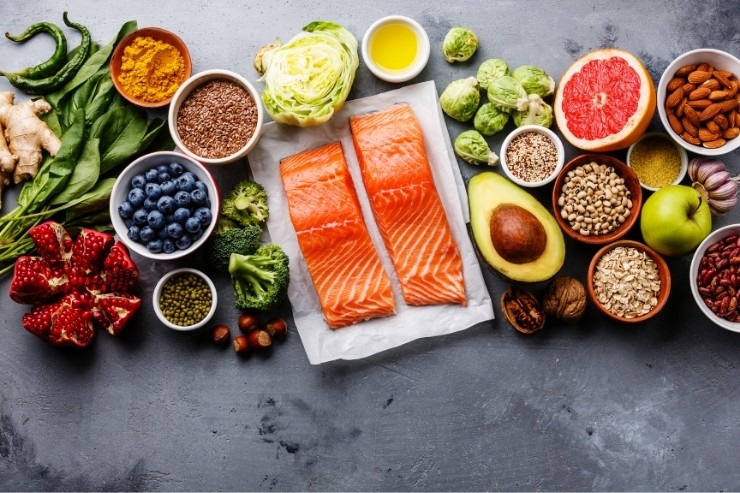The good news is that you can work to heal the environment and effect positive change in your life.
Around the world, people are thinking of ways to change their diet and protect the environment. The United Nations has released a damning report suggesting that climate change is a huge problem for our world, so many people are wondering how they can do their part.
The good news is that you can work to heal the environment and effect positive change in your life. Of course, change must come on an industrial scale to truly heal the planet, but changes individuals make can have a significant impact on the industry if enough people make them. Here’s how you can go green and eat healthy in 2021.
Switch to a plant-based diet
The effects of switching to a plant-based diet are myriad. You’ll notice an improvement in your health, your energy levels will increase, and you’ll lower your risk of cancer. Not only that, but eating a plant-based diet will increase your creativity in the kitchen, and since more and more restaurants are offering vegan options, you won’t even need to miss out when you dine out! Research from Betway shows many of the ways in which the food industry is already changing to accommodate more sustainable diet choices, so now is a good time to get ahead of the curve and make those changes.
Ditch your car
We know what it’s like to love your car. Everywhere you go, your car is with you; it’s a constant companion that you couldn’t be without. Unfortunately, if you’re driving a petrol car, your vehicle may also be a huge source of emissions. While you don’t necessarily need to completely ditch your car, we would recommend either doing so or switching to a completely electric model. These cars may not be quite as efficient in terms of charging time, but they’re much, much better for the environment, and you’ll also save money in petrol fees!
Walk more
It’s time to start asking yourself some harsh questions about walking. Is your workplace actually within walking distance? While it may not seem so at first, you’d be surprised what re-evaluating your route could do for you. Even if you can’t get to work by walking, you may well be able to find a grocery store or other amenity that you’d usually drive to within walking distance. Walking improves your mental and physical health, and it’s a great way to clear your mind, so try to find ways to walk more.
Take public transport
Many public transport companies are taking initiatives to make their vehicles more environmentally friendly. Buses are often hybrid models now, and trains are much less destructive to the environment than driving would be. If you’re comfortable with doing so in a COVID-19 world, you may wish to increase your public transport usage rather than driving everywhere. It stands to reason that the more people are on a bus, the fewer people are driving to their destination.
Prepare your own meals
If you want to be healthier, then one of the best ways you can do that is to cook your own meals at home. Rather than constantly ordering takeout or buying ready meals from the supermarket, preparing your own meals means you’ll know exactly what’s going into them, and you can control the nutritional value as well. Be sure to pack your home-cooked meals with plenty of vegetables and pulses, and if you absolutely must include meat, make sure it’s lean meat like chicken, turkey, or fish.
Go paperless
There’s a shocking amount of paper waste in society right now. If you’re tech-savvy enough to read your bills online – and trust us, you almost certainly are – then you should consider going paperless. This means you’ll receive all of your bills electronically, which cuts down hugely on paper waste. Of course, you can always recycle the bills you do receive, but isn’t it better never to use that paper in the first place? Electronic bills are often better, because you can read more information in one place quickly.
Buy things second-hand
By buying goods second-hand, you’re not introducing new waste into the world; instead, you’re essentially recycling somebody else’s possessions, giving them a new lease on life. This also means that when you’re done with the things you own, you shouldn’t just throw them in the bin; there’s almost always a better way to use them that involves recycling. Clothes can be used for scrap, media can usually be resold, and electronics can be recycled.
Recycle, recycle, recycle
This is such a major part of living green that it was essentially the poster child for the lifestyle for a long time. Don’t ever just throw something in the bin unless you’re absolutely sure it cannot be recycled. Many plastics, paper goods, and other things can be recycled even though you may not initially think they can, so be sure to look for the recycling symbol before you throw something away. If you see a symbol, take it to your nearest recycling centre!
Repair where possible
When something breaks or stops working, it can be tempting simply to throw it out and get a new one. However, you can often perform a repair instead, and not only is this better news for the environment, it’s also often cheaper for you. Sometimes, of course, this isn’t possible, but be sure to Google your problem to see if you can’t find a way to fix it before you replace the object in question. If you lack the expertise, there’s almost certainly someone out there who has it!
TravelDailyNews Asia-Pacific editorial team has an experience of over 35 years in B2B travel journalism as well as in tourism & hospitality marketing and communications.












































































